EPC Gen2 RFID Systems
These systems are somewhat “in the shadow” of the broad masses view, since they are focused more on industrial applications, but their degree of development and market growth rates of these systems, it seems to me, deserve more attention to them.
Briefly arrange the existing RFID-system on the main parameters.
If the tags do not use their own power battery, they receive it from the reader field - passive. If battery power is used, then active.
There are also “semi-passive” tags (also called “BAP” - Battery Assisted Passive), which use the radio interface and the passive system exchange protocol, but there is a battery. Constant power supply of such tags to the chip may slightly improve its characteristics in terms of the recording range, but more often additional power is used for embedded sensors (temperature, acceleration, humidity, etc.). The battery is used to power the sensors and accumulate data when the label is located outside the reader's field, and then read them when entering the registration area.
Active labels are quite expensive, large in size, but then the distance of their registration can reach a kilometer. There is also a special class of active RTLS tags — Real Time Locating Systems — real-time positioning systems.
An important difference between passive tags and active ones is that passive tags do NOT RADIATE the radio signal. Passive tags, responding to the signal from the reader, only modulate the load of their antenna system at the time of its presence in the field of the carrier frequency of the reader. The reader detects and detects these weak reflected modulations against the background of continuous carrier frequency radiation through its transceiver antenna.
EPC Gen2 systems are passive, but there are also semi-passive special tags.
LF - Low Frequency, 125-135 kHz. “Ordinary” tag cards or intercom key chains for access control systems, capsule tags for chipping animals (but there are also fans of embedded unique identifiers among higher-minded creatures).
')
HF - High Frequency, 13,553-13,567 MHz. All travel cards, wireless bank cards, NFC devices and tags. There are also more “simple” tags without cryptographic functions that contain only an identifier.
UHF - Ultra High Frequency. The ranges 433.075-434.790 MHz and 2400-2483.5 MHz are used by active tags and RTLS, as well as keychains for alarms, wireless keyboards, mice, etc.
For EPC Gen2, a UHF band of 860–960 MHz is used globally, but locally in countries and regions narrower bands are used.
In the Russian Federation, frequencies of the European range of 865.6-867.6 MHz are used in accordance with the ETSI standard EN302-208-1 V1.2.1, although the band formally allocated in the Russian Federation is already 866.6-867.4 MHz.
The EPC Gen2 standard (fully Electronic Product Code Class 1 Generation 2) was developed by the international organization GS1 EPC Global . It also complies with ISO / IEC 18000-63 (C). The corresponding national version of GOST is being developed.
What are the significant advantages and differences of EPC Gen2 RFID systems compared to others ?:
Gen2 tags-stickers:
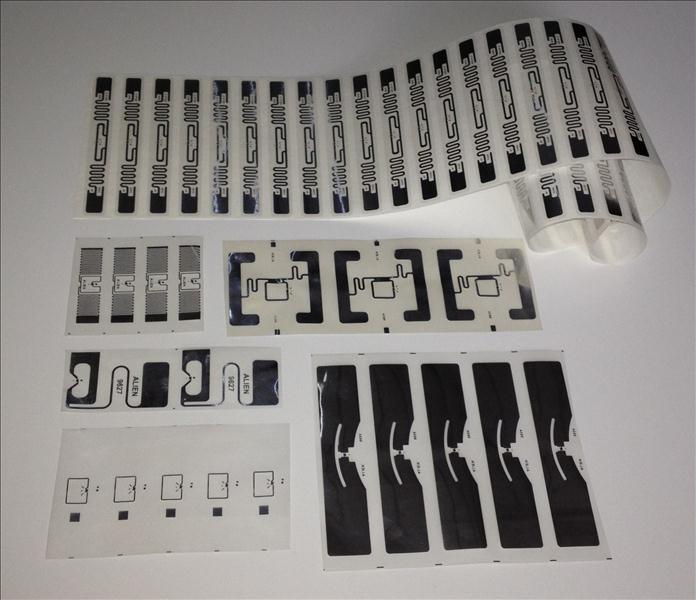
The most massively produced labels, stickers on paper or plastic base in rolls, from which tags are separated manually or using an applicator and pasted on a given object.
Structurally, the tags are an electronic chip, fixed with a special glue on the contact pads of the metallized antenna.
The antenna shape is calculated specifically to meet the optimal parameters for matching the radio signal with the tag chip and can take quite varied forms, although in fact most of them are “reduced” dipoles, i.e., dipoles with radiation characteristics, but smaller than half the wavelength that in this range is about 17 cm.
Antennas of different configurations have differences in the directivity patterns, energy efficiency and "sustainability" of the antenna resonance tuning when it is placed at different sites.
On average, the rule is that the smaller the maximum linear size of the label, the less its “sensitivity” and the registration distance, although there are differences between specific models of comparable sizes.
In addition to the “reduced dipole” antenna circuit, there are also special “near-field” tags with only a loop antenna (in this they are similar to the LF and HF tags, which are the only ones that exist). Such labels are small in size (for example, 12x9 mm) and are recorded from a distance of no more than 20-25 cm, but if they are used for “difficult” environmental conditions with liquids and metal elements, then the difference compared to “large” marks in quality and distance registration will not be - but their size is significantly smaller.
The “large” labels of a sticker with a long registration distance are the size on the long side of 80-100 mm.
On the basis of thin tags are also made tags cards from plastic in standard sizes.
There are also special "resistant" to external influences tags that can be used in laundries or dry cleaners.
Laundry label:

Label labels are shielded and do not work on metallic or metallized surfaces (even on “translucent” metallic coating, such as antistatic bags for computer components).
There are special marks for working on metal objects, they are more “thick”, from a few millimeters, and significantly more expensive, but they work on metal objects and the distance of registration can be even greater than that of label stickers (but the rule also works on average the larger the mark, the greater the distance).
Structurally, the tags on the metal are more complex and significantly more expensive. Often, variations of a “patch antenna” with an air or more dense dielectric between the working and “earthen” plate, which is located in the direction of the metal, are used.
Tags on metal:
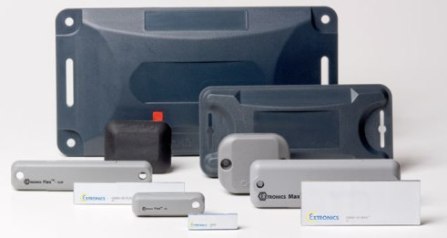
The memory of the Gen2 standard tags is divided into 4 banks addressed by the radio interface commands:
Reserved Memory (00) is used to store:
EPC (01, Electronic Product Code). The unique identifier of the label according to which the labels differ from each other when they are found. The most common length identifier is 96 bits, although now there are already tags with 240 bits EPC (you can use less). "From the factory" the bank is not write-protected and can be overwritten, and often must be overwritten, because the tags can be with a "empty" EPC or all tags with the same value.
TID (10, Transponder ID). Identifies the manufacturer and model of the tag chip with the highlighted unique code. There may also be an additional unique identifier of each individual label (Serialized TID), which can be used as a means of protecting the label from counterfeiting. EPC tags can be duplicated, but the TID bank is protected from being overwritten during tag production and, if there is a Serialized TID, together with a manufacturer and chip ID, is guaranteed to be unique.
User Memory (11) - optional, may be missing. Used to store any information. If there is, then the usual size is from 32 to 512 bits. There are models with a large volume, but they often have compatibility problems with readers.
The contents of the EPC banks, User Memory and separately KILL and ACCESS areas can be protected from changing the value, temporarily or permanently (Permalock = Permanent Lock).
Stationary readers are the most productive and provide the maximum speed and range of registration, which is achieved through the use of high-performance digital signal processors that emit a weak tag response signal against the background of the radio frequency carrier, noise and interference.
Stationary reader:
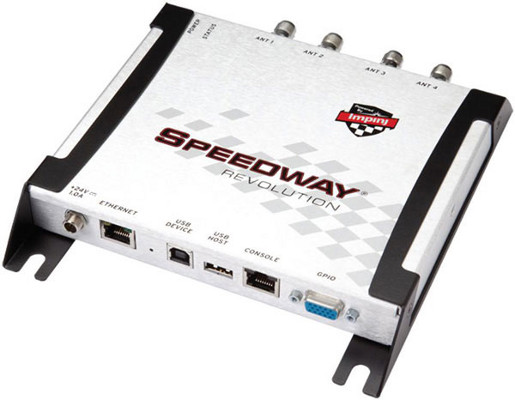
Stationary readers can have different interfaces - RS232 / 485, USB, Wiegand, but the "industrial standard" is UTP Ethernet.
Stationary readers usually have from 2 to 8 connectors for connecting antennas via the built-in switch, that is, only one antenna works at a time. Switching between antennas occurs automatically and fairly quickly, but with settings you can choose which antennas are involved and individually adjust the radio frequency power for each output.
Also, usually all stationary readers have a special connector with 4-8 digital lines for controlling external devices - turning on warning lights, opening doors, barriers, receiving external signals - sensors for appearing objects, opening doors, etc.
For software integration of readers into the information system or for communication with the control computer, all manufacturers provide the SDK and API, as well as ready-made test software that allows you to test the reader and select settings.
Recently, all major manufacturers have already used the standard of low-level communication protocol with the reader LLRP (Low Level Reader Protocol, ISO / IEC 24791-5), although all readers, unfortunately, still have many individual features that must be considered for maximum performance and tag registration quality.
Prices for stationary readers "in our area" start at about $ 1200 for simpler models with two antenna inputs and twice as expensive for more complex models for 8 antennas.
Portal (gate) registration areas are surrounded by antennas connected to a stationary reader, a zone of movement of objects with marks from the sides and / or from above. For example, registration of tags of goods on a transporting pallet, tags of personnel passing through the control zone, tags of goods moving along a conveyor belt, tags of books carried by users at the exit of the library. The typical dimensions of the portal zone are up to 3 meters wide and high.
As antennas, it is standard to use directional “patch antennas” with circular polarization, which is necessary to ensure the registration of tags in different orientations. It is possible to use antennas with linear polarization, which gives a gain in the recording distance, but this requires confidence in the constant orientation of all marks in the control zone, for example, that all of them are always fixed with a long side horizontally.
Typical single-element patch antennas have a gain of about 8 dB and a radiation directivity pattern of 0.5 to ± 60º.
Prices for simple single-element patch antennas start at $ 150, multi-element patch antennas with more directivity will be more expensive.
Portal registration area with 4 patch antennas:

In cases where the flow of tags moving through the registration area is small and installing a portal reader on the sides of the aisle is not desirable, it is possible to arrange the antennas on top. There are integrated ceiling readers that contain everything in one package, including the reader and antenna.
Ceiling Reader:
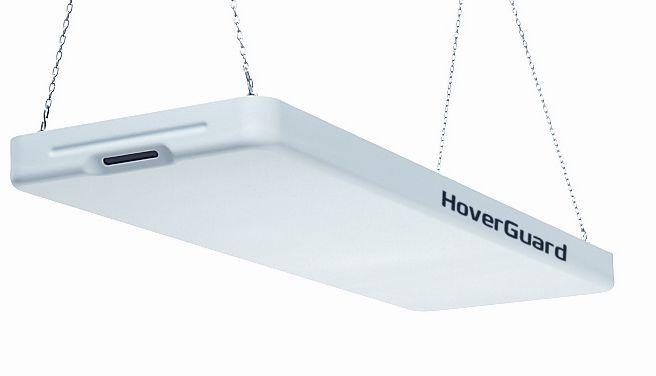
The optimal location of the tags on the vehicle - on the windshield or on the "torpedo" under it, although the tags are also embedded in the license plates, but this is a different matter.
It is possible that in the Russian Federation this will soon have to be seen in their license plates (and for their own money).
Registering antennas are positioned with the radiation direction vertically down over the center of the lane if two-way traffic is expected along the lane, or at an angle to the approach of cars, which improves the quality of registration (but in the other direction the tags may not be recorded at all - then use a pair of “looking” antennas in different directions).
Reading antennas of vehicle tags:
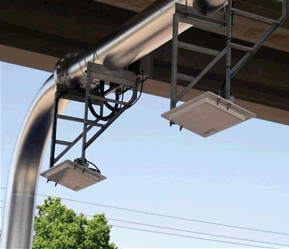
If it is necessary to register a large number of tags in a small area with linear dimensions of less than a meter, it is justified to use tunnels or boxes containing antennas surrounding the registration area with the greatest possible number of sides and directions, and external shielding elements that prevent “parasitic” registrations of tags outside.
RFID Tunnel:
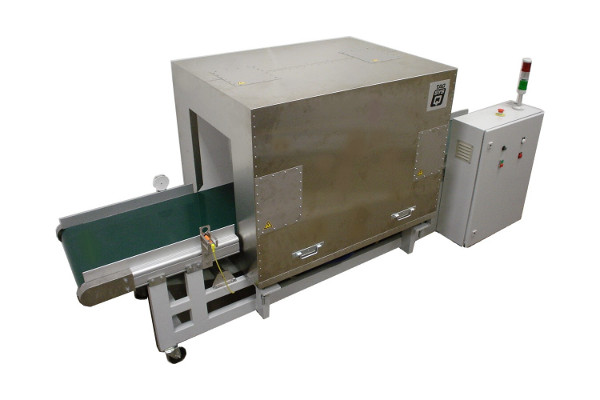
Another effective area of application for RFID tunnels or boxes is the registration of tags on "complex" objects containing water, electrolytes, or a large number of "inclusions" of metals (for example, while simultaneously registering 200 tags on jewelry tags in group packages).
In such conditions, tag reading is effective only in the “near” zone at a distance of no more than 20-25 cm from the antenna. At the same time, it is more efficient to use special “near-field” loop antennas, rather than patch antennas.
An important and useful type of readers, allowing you to speed up many operations with goods or objects: search for specified objects by tags (in a warehouse, in a store, in a library); fast inventory of warehouses or fixed assets; control picking orders.
It is important that unlike the LF and HF mobile readers (including smartphones with NFC), which have a few centimeters on the registration of tags and, unfortunately, is not very different from reading a bar code, mobile Gen2 readers come with a registration distance of up to several meters. .
It is possible to quickly register all tags on the shelf or hangers with goods, passing by it. Although the speed of registration of tags by mobile readers is less than stationary, usually no more than 10 unique tags per second.
In addition to the RFID reader, mobile terminals usually have a barcode scanner, Wi-Fi, Bluetooth, and there may be GPS / GLONAS and GSM / 3G modules.
Most of the mobile terminals work on the good old Windows Mobile / CE, but the models are already appearing on Android.
Mobile terminals usually have a good protection class, allowing them to be used in industrial and outdoor environments.
Mobile reader:

Mobile terminal prices start at $ 3000.
Modern models are connected and powered via USB and are designed to read and write a small number of tags from a short distance.
Important as companion readers for the initial binding and numbering of tags, but they can also play an important role, for example, in the workplace of a librarian to quickly issue or receive a stack of books with RFID tags (the same reader is used to quickly identify the reader by its plastic map labeled EPC Gen2).
Desktop reader:

The price of a desktop reader with a built-in antenna and a USB interface is about $ 1200.
They are modified label printers, in which, while maintaining the printing function, an RFID module is added or can be added, which also allows reading and writing RFID tags fed from the roll.
Important in the necessary preparation of a large number of labels, especially in conjunction with the printing of labels.
RFID printer:
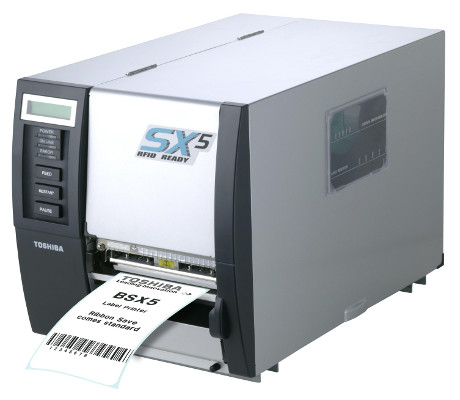
Prices for RFID printers start at $ 1600 for the simplest models and from $ 3000 for industrial production models.
It makes little sense to use EPC Gen2 systems in simple cases. The "hard" cases in which the implementation of the EPC Gen2 system can benefit are the following:
The main economic benefit of using EPC Gen2 RFID systems is to speed up and reduce the complexity of object accounting operations - acceptance, shipment, inventory, and search for specified objects.
Also important is the possibility of reducing the influence of the human factor, because in many cases the registration of tags can occur without human intervention (when moving through the portal registration area, for example).
Additionally, RFID tags of objects can be used in anti-theft systems to confirm the authenticity of products (when using Serialized TID) and the warranty period, to quickly obtain basic data about the object or product (by tag identifier from the database or directly from the tag data).
The limitations and difficulties of implementing EPC Gen2 systems are related towhere to take so much money , radio communication features in principle, as well as what is described above as their advantage - a large recording distance - a common paradox.
Radio waves of this frequency range are strongly absorbed by water and electrolytes and are shielded by metal objects.
Long registration distance leads to the problem of "parasitic" registrations. To ensure reliable registration of many tags at the same time, which may be in a non-optimal orientation, to be shielded by the mutual proximity of several tags, the presence of shielding or absorbing objects, it is necessary to set the recording power that is many times greater than that required for registering a single “in the air” tag.
Accordingly, with an increase in power, the marks begin to be registered in “good” conditions at large distances from the reading zone - up to 10 meters or more.
For example, a portal registration zone is installed near the exit gate from the warehouse, which is used for group reading of all marks of the formed pallet when it is taken out.
But at the same time, tags with warehouse racks (even if some of them are not often) located at a distance of 10 meters or even more will be easily read. Warehouse areas of the road and no one will leave an empty space of 15x15 meters around the registration area. A solution to the problem is to isolate the registration area with screens or “houses” around the registration areas.
EPC Gen2 RFID systems can be very effective and examples of their use are no longer small - warehouse and transport logistics, control of fixed assets (fast inventory), control of vehicles, control of personnel movements, libraries and archives, retail clothing and footwear, pharmaceuticals (including fraud control). ), control of components and spare parts in the aviation and automotive industries, control of baggage, control of mail shipments.
Briefly arrange the existing RFID-system on the main parameters.
Active-passive
If the tags do not use their own power battery, they receive it from the reader field - passive. If battery power is used, then active.
There are also “semi-passive” tags (also called “BAP” - Battery Assisted Passive), which use the radio interface and the passive system exchange protocol, but there is a battery. Constant power supply of such tags to the chip may slightly improve its characteristics in terms of the recording range, but more often additional power is used for embedded sensors (temperature, acceleration, humidity, etc.). The battery is used to power the sensors and accumulate data when the label is located outside the reader's field, and then read them when entering the registration area.
Active labels are quite expensive, large in size, but then the distance of their registration can reach a kilometer. There is also a special class of active RTLS tags — Real Time Locating Systems — real-time positioning systems.
An important difference between passive tags and active ones is that passive tags do NOT RADIATE the radio signal. Passive tags, responding to the signal from the reader, only modulate the load of their antenna system at the time of its presence in the field of the carrier frequency of the reader. The reader detects and detects these weak reflected modulations against the background of continuous carrier frequency radiation through its transceiver antenna.
EPC Gen2 systems are passive, but there are also semi-passive special tags.
frequency range
LF - Low Frequency, 125-135 kHz. “Ordinary” tag cards or intercom key chains for access control systems, capsule tags for chipping animals (but there are also fans of embedded unique identifiers among higher-minded creatures).
')
HF - High Frequency, 13,553-13,567 MHz. All travel cards, wireless bank cards, NFC devices and tags. There are also more “simple” tags without cryptographic functions that contain only an identifier.
UHF - Ultra High Frequency. The ranges 433.075-434.790 MHz and 2400-2483.5 MHz are used by active tags and RTLS, as well as keychains for alarms, wireless keyboards, mice, etc.
For EPC Gen2, a UHF band of 860–960 MHz is used globally, but locally in countries and regions narrower bands are used.
In the Russian Federation, frequencies of the European range of 865.6-867.6 MHz are used in accordance with the ETSI standard EN302-208-1 V1.2.1, although the band formally allocated in the Russian Federation is already 866.6-867.4 MHz.
The EPC Gen2 standard (fully Electronic Product Code Class 1 Generation 2) was developed by the international organization GS1 EPC Global . It also complies with ISO / IEC 18000-63 (C). The corresponding national version of GOST is being developed.
What are the significant advantages and differences of EPC Gen2 RFID systems compared to others ?:
- Record label registration distance for passive systems of up to 10 meters or more, which is explained by the use of the “full” electromagnetic field, and not the magnetic coupling of the loop antenna of the reader and the tag, as in LF and HF;
- Effective "anti-collision" mechanism that allows you to simultaneously read up to 300 unique labels in the registration area;
- High speed tag reading - up to hundreds of times per second. The possibility of registering single tags experimentally when moving through the registration area at speeds up to 250 km / h has been experimentally confirmed;
- The lowest price is a simple label-sticker (for 2013, about 5 rubles for large volumes of delivery).
Gen2 tags-stickers:

The most massively produced labels, stickers on paper or plastic base in rolls, from which tags are separated manually or using an applicator and pasted on a given object.
Structurally, the tags are an electronic chip, fixed with a special glue on the contact pads of the metallized antenna.
The antenna shape is calculated specifically to meet the optimal parameters for matching the radio signal with the tag chip and can take quite varied forms, although in fact most of them are “reduced” dipoles, i.e., dipoles with radiation characteristics, but smaller than half the wavelength that in this range is about 17 cm.
Antennas of different configurations have differences in the directivity patterns, energy efficiency and "sustainability" of the antenna resonance tuning when it is placed at different sites.
On average, the rule is that the smaller the maximum linear size of the label, the less its “sensitivity” and the registration distance, although there are differences between specific models of comparable sizes.
In addition to the “reduced dipole” antenna circuit, there are also special “near-field” tags with only a loop antenna (in this they are similar to the LF and HF tags, which are the only ones that exist). Such labels are small in size (for example, 12x9 mm) and are recorded from a distance of no more than 20-25 cm, but if they are used for “difficult” environmental conditions with liquids and metal elements, then the difference compared to “large” marks in quality and distance registration will not be - but their size is significantly smaller.
The “large” labels of a sticker with a long registration distance are the size on the long side of 80-100 mm.
On the basis of thin tags are also made tags cards from plastic in standard sizes.
There are also special "resistant" to external influences tags that can be used in laundries or dry cleaners.
Laundry label:

Label labels are shielded and do not work on metallic or metallized surfaces (even on “translucent” metallic coating, such as antistatic bags for computer components).
There are special marks for working on metal objects, they are more “thick”, from a few millimeters, and significantly more expensive, but they work on metal objects and the distance of registration can be even greater than that of label stickers (but the rule also works on average the larger the mark, the greater the distance).
Structurally, the tags on the metal are more complex and significantly more expensive. Often, variations of a “patch antenna” with an air or more dense dielectric between the working and “earthen” plate, which is located in the direction of the metal, are used.
Tags on metal:

"Content" RFID tags EPC Gen2
The memory of the Gen2 standard tags is divided into 4 banks addressed by the radio interface commands:
Reserved Memory (00) is used to store:
- KILL password (32 bits). With its non-zero value using the KILL command, the label is "killed" forever and without the possibility of restoring its work;
- ACCESS password (32 bits). When it is installed, access to the label is possible only if you know this password.
EPC (01, Electronic Product Code). The unique identifier of the label according to which the labels differ from each other when they are found. The most common length identifier is 96 bits, although now there are already tags with 240 bits EPC (you can use less). "From the factory" the bank is not write-protected and can be overwritten, and often must be overwritten, because the tags can be with a "empty" EPC or all tags with the same value.
TID (10, Transponder ID). Identifies the manufacturer and model of the tag chip with the highlighted unique code. There may also be an additional unique identifier of each individual label (Serialized TID), which can be used as a means of protecting the label from counterfeiting. EPC tags can be duplicated, but the TID bank is protected from being overwritten during tag production and, if there is a Serialized TID, together with a manufacturer and chip ID, is guaranteed to be unique.
User Memory (11) - optional, may be missing. Used to store any information. If there is, then the usual size is from 32 to 512 bits. There are models with a large volume, but they often have compatibility problems with readers.
The contents of the EPC banks, User Memory and separately KILL and ACCESS areas can be protected from changing the value, temporarily or permanently (Permalock = Permanent Lock).
EPC Gen2 RFID Readers
Stationary readers and registration areas
Stationary readers are the most productive and provide the maximum speed and range of registration, which is achieved through the use of high-performance digital signal processors that emit a weak tag response signal against the background of the radio frequency carrier, noise and interference.
Stationary reader:

Stationary readers can have different interfaces - RS232 / 485, USB, Wiegand, but the "industrial standard" is UTP Ethernet.
Stationary readers usually have from 2 to 8 connectors for connecting antennas via the built-in switch, that is, only one antenna works at a time. Switching between antennas occurs automatically and fairly quickly, but with settings you can choose which antennas are involved and individually adjust the radio frequency power for each output.
Also, usually all stationary readers have a special connector with 4-8 digital lines for controlling external devices - turning on warning lights, opening doors, barriers, receiving external signals - sensors for appearing objects, opening doors, etc.
For software integration of readers into the information system or for communication with the control computer, all manufacturers provide the SDK and API, as well as ready-made test software that allows you to test the reader and select settings.
Recently, all major manufacturers have already used the standard of low-level communication protocol with the reader LLRP (Low Level Reader Protocol, ISO / IEC 24791-5), although all readers, unfortunately, still have many individual features that must be considered for maximum performance and tag registration quality.
Prices for stationary readers "in our area" start at about $ 1200 for simpler models with two antenna inputs and twice as expensive for more complex models for 8 antennas.
Portal registration areas
Portal (gate) registration areas are surrounded by antennas connected to a stationary reader, a zone of movement of objects with marks from the sides and / or from above. For example, registration of tags of goods on a transporting pallet, tags of personnel passing through the control zone, tags of goods moving along a conveyor belt, tags of books carried by users at the exit of the library. The typical dimensions of the portal zone are up to 3 meters wide and high.
As antennas, it is standard to use directional “patch antennas” with circular polarization, which is necessary to ensure the registration of tags in different orientations. It is possible to use antennas with linear polarization, which gives a gain in the recording distance, but this requires confidence in the constant orientation of all marks in the control zone, for example, that all of them are always fixed with a long side horizontally.
Typical single-element patch antennas have a gain of about 8 dB and a radiation directivity pattern of 0.5 to ± 60º.
Prices for simple single-element patch antennas start at $ 150, multi-element patch antennas with more directivity will be more expensive.
Portal registration area with 4 patch antennas:

In cases where the flow of tags moving through the registration area is small and installing a portal reader on the sides of the aisle is not desirable, it is possible to arrange the antennas on top. There are integrated ceiling readers that contain everything in one package, including the reader and antenna.
Ceiling Reader:

Stationary reading zones of transport tags
The optimal location of the tags on the vehicle - on the windshield or on the "torpedo" under it, although the tags are also embedded in the license plates, but this is a different matter.
It is possible that in the Russian Federation this will soon have to be seen in their license plates (and for their own money).
Registering antennas are positioned with the radiation direction vertically down over the center of the lane if two-way traffic is expected along the lane, or at an angle to the approach of cars, which improves the quality of registration (but in the other direction the tags may not be recorded at all - then use a pair of “looking” antennas in different directions).
Reading antennas of vehicle tags:

RFID tunnel
If it is necessary to register a large number of tags in a small area with linear dimensions of less than a meter, it is justified to use tunnels or boxes containing antennas surrounding the registration area with the greatest possible number of sides and directions, and external shielding elements that prevent “parasitic” registrations of tags outside.
RFID Tunnel:

Another effective area of application for RFID tunnels or boxes is the registration of tags on "complex" objects containing water, electrolytes, or a large number of "inclusions" of metals (for example, while simultaneously registering 200 tags on jewelry tags in group packages).
In such conditions, tag reading is effective only in the “near” zone at a distance of no more than 20-25 cm from the antenna. At the same time, it is more efficient to use special “near-field” loop antennas, rather than patch antennas.
Mobile RFID readers (terminals)
An important and useful type of readers, allowing you to speed up many operations with goods or objects: search for specified objects by tags (in a warehouse, in a store, in a library); fast inventory of warehouses or fixed assets; control picking orders.
It is important that unlike the LF and HF mobile readers (including smartphones with NFC), which have a few centimeters on the registration of tags and, unfortunately, is not very different from reading a bar code, mobile Gen2 readers come with a registration distance of up to several meters. .
It is possible to quickly register all tags on the shelf or hangers with goods, passing by it. Although the speed of registration of tags by mobile readers is less than stationary, usually no more than 10 unique tags per second.
In addition to the RFID reader, mobile terminals usually have a barcode scanner, Wi-Fi, Bluetooth, and there may be GPS / GLONAS and GSM / 3G modules.
Most of the mobile terminals work on the good old Windows Mobile / CE, but the models are already appearing on Android.
Mobile terminals usually have a good protection class, allowing them to be used in industrial and outdoor environments.
Mobile reader:

Mobile terminal prices start at $ 3000.
Desktop readers
Modern models are connected and powered via USB and are designed to read and write a small number of tags from a short distance.
Important as companion readers for the initial binding and numbering of tags, but they can also play an important role, for example, in the workplace of a librarian to quickly issue or receive a stack of books with RFID tags (the same reader is used to quickly identify the reader by its plastic map labeled EPC Gen2).
Desktop reader:

The price of a desktop reader with a built-in antenna and a USB interface is about $ 1200.
RFID printers
They are modified label printers, in which, while maintaining the printing function, an RFID module is added or can be added, which also allows reading and writing RFID tags fed from the roll.
Important in the necessary preparation of a large number of labels, especially in conjunction with the printing of labels.
RFID printer:

Prices for RFID printers start at $ 1600 for the simplest models and from $ 3000 for industrial production models.
Methods and features of using EPC Gen2 systems
It makes little sense to use EPC Gen2 systems in simple cases. The "hard" cases in which the implementation of the EPC Gen2 system can benefit are the following:
- The need to register tags from large distances from 0.5 to 10 meters;
- Simultaneous registration of a large number of tags (up to 300);
- Registration of tags moving at high speed.
The main economic benefit of using EPC Gen2 RFID systems is to speed up and reduce the complexity of object accounting operations - acceptance, shipment, inventory, and search for specified objects.
Also important is the possibility of reducing the influence of the human factor, because in many cases the registration of tags can occur without human intervention (when moving through the portal registration area, for example).
Additionally, RFID tags of objects can be used in anti-theft systems to confirm the authenticity of products (when using Serialized TID) and the warranty period, to quickly obtain basic data about the object or product (by tag identifier from the database or directly from the tag data).
The limitations and difficulties of implementing EPC Gen2 systems are related to
Radio waves of this frequency range are strongly absorbed by water and electrolytes and are shielded by metal objects.
Long registration distance leads to the problem of "parasitic" registrations. To ensure reliable registration of many tags at the same time, which may be in a non-optimal orientation, to be shielded by the mutual proximity of several tags, the presence of shielding or absorbing objects, it is necessary to set the recording power that is many times greater than that required for registering a single “in the air” tag.
Accordingly, with an increase in power, the marks begin to be registered in “good” conditions at large distances from the reading zone - up to 10 meters or more.
For example, a portal registration zone is installed near the exit gate from the warehouse, which is used for group reading of all marks of the formed pallet when it is taken out.
But at the same time, tags with warehouse racks (even if some of them are not often) located at a distance of 10 meters or even more will be easily read. Warehouse areas of the road and no one will leave an empty space of 15x15 meters around the registration area. A solution to the problem is to isolate the registration area with screens or “houses” around the registration areas.
EPC Gen2 RFID systems can be very effective and examples of their use are no longer small - warehouse and transport logistics, control of fixed assets (fast inventory), control of vehicles, control of personnel movements, libraries and archives, retail clothing and footwear, pharmaceuticals (including fraud control). ), control of components and spare parts in the aviation and automotive industries, control of baggage, control of mail shipments.
Source: https://habr.com/ru/post/194908/
All Articles